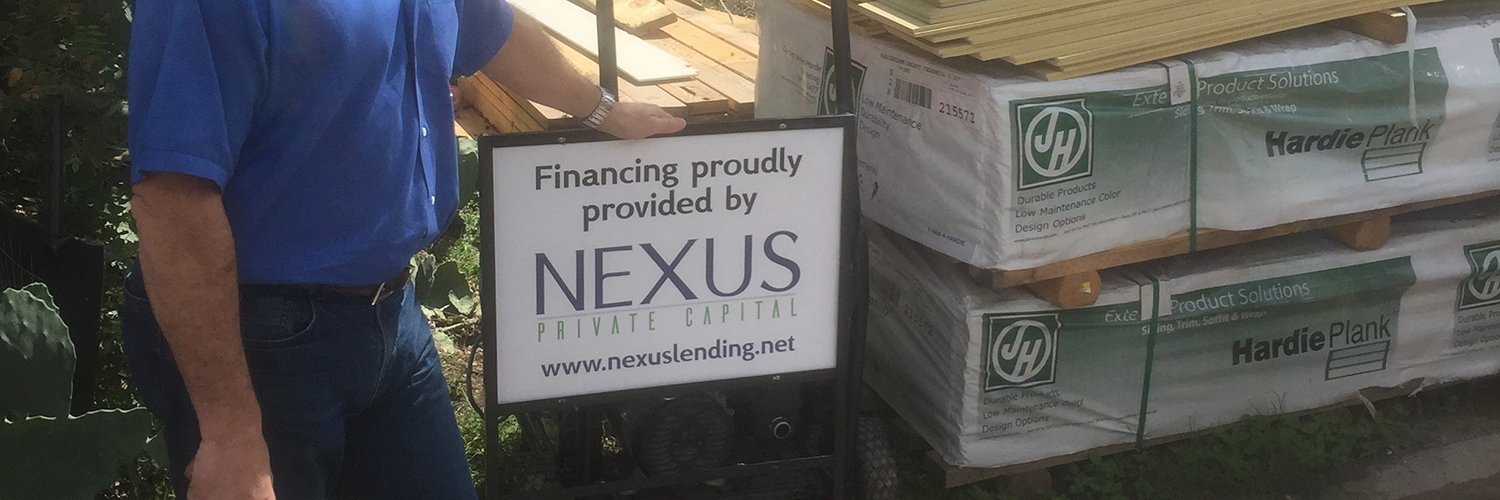5 Reasons a Hard Money Loan is a Smart Choice for House Flipping
Last year, almost 208,000 single-family homes and condos were flipped in the United States. In the state of Wyoming, the average gross profit from flipping a house was $33,475.
When a new investor starts the process of flipping a house, it’s easy to get confused and overwhelmed. The right choices can earn you a pretty penny, but less wise choices can leave you upside down. Or even worse shut down the entire project before it’s even begun.
One of the biggest choices an investor must make is which type of financing to use – a conventional bank loan or a hard money loan. Hard money loans have a reputation for being risky, but there are many overlooked benefits to this less traditional method of funding.
1. Speed
If you have ever applied for a conventional bank loan, you know that it can be a complicated, lengthy process. The applications are often multiple pages and contain dozens upon dozens of questions to trudge through. Once the application has been submitted, it can take several weeks to get a response.
If the loan request is approved, the borrower must wait even longer for the funds to become available. Many investors simply don’t have this kind of time – the amount of time that passes between filling out the loan application and receiving funding can cost the buyer the investment property for which they needed the money.
Hard money loan applications are simple and straightforward. There are even hard money loan directory websites where you can submit a five minute, no-frills, no-fuss loan application to multiple Wyoming hard money lenders at the same time.
If an application is submitted in person, it isn’t unheard of to receive approval after only a brief conversation with the lender. Once approved, funds should be available within a week or two. In certain situations, a reputable lender can have the funds in less than a week. This quick turnaround provides the investor with a much better chance of securing the property he seeks.
2. Leverage
Many investors like to have multiple projects in progress at the same time. This is harder to achieve with a conventional bank loan, as a majority of these lenders will cap the number of loans provided to the same borrower at four. Hard money lenders see the situation much differently.
They view working with a multi-property investor as a good thing because the borrower has more options available to them; therefore, the lender can cross-collateralized the properties if necessary.
3. Flexibility
The first thing many people think of when applying for a bank loan is the vast number of rules, regulations, and conditions. Your credit score needs to be good to excellent, which means you should have very few to no missed or late payments in your credit history.
Many conventional lenders require the applicant to have a full-time job. This can present a problem for part-time employees, independent contractors, or those who are self-employed. Lenders put all this information together to calculate the borrower’s debt-to-income ratio, which shows how much the borrower owes in debt payments each month in comparison to his or her monthly income.
Sometimes, conventional loans even require the buyer to purchase mortgage insurance, which adds another level of paperwork and headaches. On the contrary, hard money lenders are far less concerned with credit scores and numbers and much more concerned with possession of assets. If a hard money lender approves a loan and the borrower fails to repay on time, the lender can seize the funded property and resell in order to reimburse the loan money.
For this reason, hard money loans are best for short term financing for projects such as house flipping. The investor uses the hard money loan to buy the property, then flips and resells the property as quickly as possible. The money from reselling should be enough to repay the loan in its entirety and make a profit.
4. Competitive Edge
As previously mentioned, hard money financing moves significantly faster than conventional bank lending. In the world of real estate investment and house flipping, where multiple investors may have eyes on the same properties, speed is crucial.
Property sellers are, in general, looking for two things: cash transactions and a quick sale. Hard money loans provide both. While investor A is waiting several weeks to have his application approved and loan funded, investor B has cash in hand in less than two weeks and is ready to complete the purchase.
Sellers typically go with whichever investor is prepared first, and investor B is now beginning demolition and construction while investor A is still waiting.
5. Wisdom
Hard money lenders are often industry experts. A lender specializing in real estate investment is likely to be a wealth of knowledge. They will likely share that knowledge since the project itself is the collateral. The success of the project is what will repay the loan, the lender is also invested in the project and wants it to do well.
They do have the option, if necessary, to repossess the property, but this is not ideal. The relationship between real estate investor and hard money lender is a partnership. Because the lender wants the project to go smoothly, he will offer his honest opinion of the project. They will bring to light any concerns or potential issues of which the buyer might not be aware.
Through this process, the investor will not only gain wisdom for future transactions but will develop trust in his lender. Increasing the chances of a successful outcome for both parties.
House flipping has become somewhat of a phenomenon in recent years. It’s easy to see why – it’s resourceful, it’s profitable, and it’s fun. However, it’s also very labor-extensive and can be stressful.
Don’t add to that stress by dealing with a time consuming frustrating bank loan. Start the project off right with a quick, easy hard money loan. You will be well on your way to a beautiful finished product. Contact a reputable hard money lender to get started.
.center_container #informationFacilitiesContainer h1 { color: !important; }.tms-card-container h2, #categoryFacilitiesContainer h2 { color: !important; }.tms-button { background-color: !important; }.center_container #categoryFacilitiesContainer #categoryCardContainer .col .card-title { color: !important; }.pagination-container .pagination li a { color: !important; }.center_container #browsingFacilitiesContainer h1 { color: !important; }.center_container .tms-card-container #facilityCardContainer .card-title { color: !important; }browsingFacilitiesContainer html a { color: !important; }.qa-decor-border-red { border-bottom: 3px solid !important; }








